A Wet Pet Named Parrot
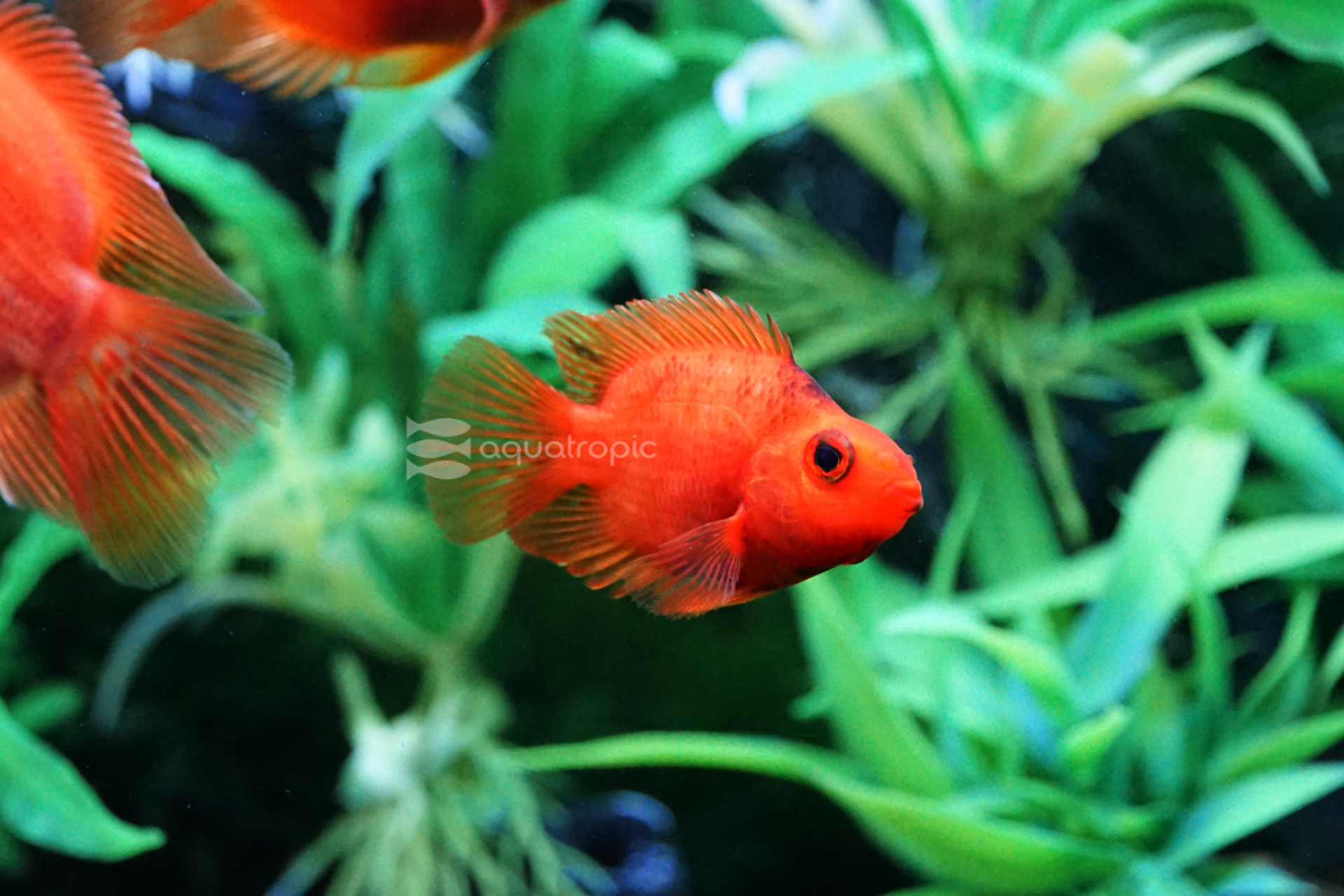
The True Parrot Cichlid (Hoplarchus psittacus) is an interesting fish, and sooner or later we'll get around to writing an article about it. There is another Parrot Cichlid that is much more common and it's entirely the result of human intervention. We've bred this specific animal into existence by hybridizing at least a few different cichlid species. Exactly what these species were originally is a matter of debate. Most of the species are thought to be South American and lists of potential parentage most often include Red Devils (Amphilophus labiatus), Severums, (Helos severus), Red Head Cichlids (Paratheraps synspilum), Firemouth (Thorichthys meeki) and Midas (Amphilophus cintrinellus), though you'll see other species listed and we've never seen a definitive list, nor are we sure one exists. It's entirely possible that Parrot Cichlids were brought into existence by more than one breeder originally, and that we may have gotten to this point from multiple different lineages. This theory is bolstered by the fact that you'll see Parrot Cichlids listed with a variety of different species names.
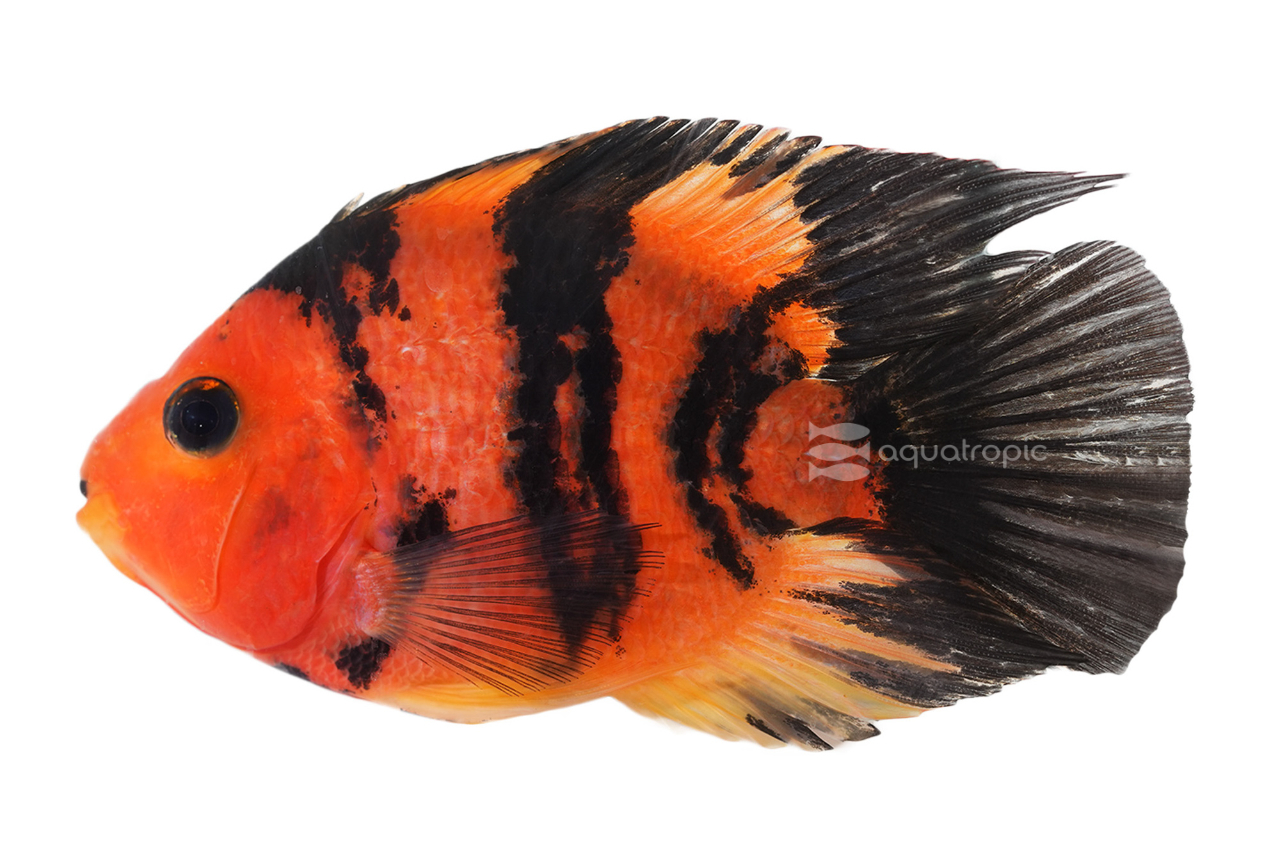 At least a couple of these species have some aggression to them, but the Parrot Cichlids lack this trait, they are usually very peaceful fish. As expected from such a diverse history, they are brilliantly colored, and we offer at least a dozen different color variants, the only other Cichlid that compares numbers wise is the Flowerhorns. You can see all the strains available to Aquatropic retail partners here: https://www.qualitymarine.com/aquatropic/fish/cichlids/parrot/. Parrots are a popular pet, their colors, bulbous shapes, smiling faces and engaging personalities have endeared them to legions of dedicated fans.
At least a couple of these species have some aggression to them, but the Parrot Cichlids lack this trait, they are usually very peaceful fish. As expected from such a diverse history, they are brilliantly colored, and we offer at least a dozen different color variants, the only other Cichlid that compares numbers wise is the Flowerhorns. You can see all the strains available to Aquatropic retail partners here: https://www.qualitymarine.com/aquatropic/fish/cichlids/parrot/. Parrots are a popular pet, their colors, bulbous shapes, smiling faces and engaging personalities have endeared them to legions of dedicated fans.
As the Parrot Cichlid literally doesn't exist in the wild, there is no native habitat to reference when designing a display for them, you can design the décor of the tank however you would like. The tank itself should be 55- 75 gallons because most variants of Parrot Cichlid can get seven or eight inches long. You could keep a pair or a trio in a tank this size, as they are not the most powerful swimmers. Flow should be sedate to help them navigate their homes and for one reason or another, they don't seem to like very bright lighting; some floating plants or just slightly less powerful illumination would be appreciated. One note about aquascaping. Parrot Cichlids are avid HGTV fans and love a home renovation, however, they generally get stuck on demo day and never put the place back together. As a result, plants are really likely to get pulled up. If you want your decorations to stay in one place, make them big, or glue them down, or both. Parrots will ![]()
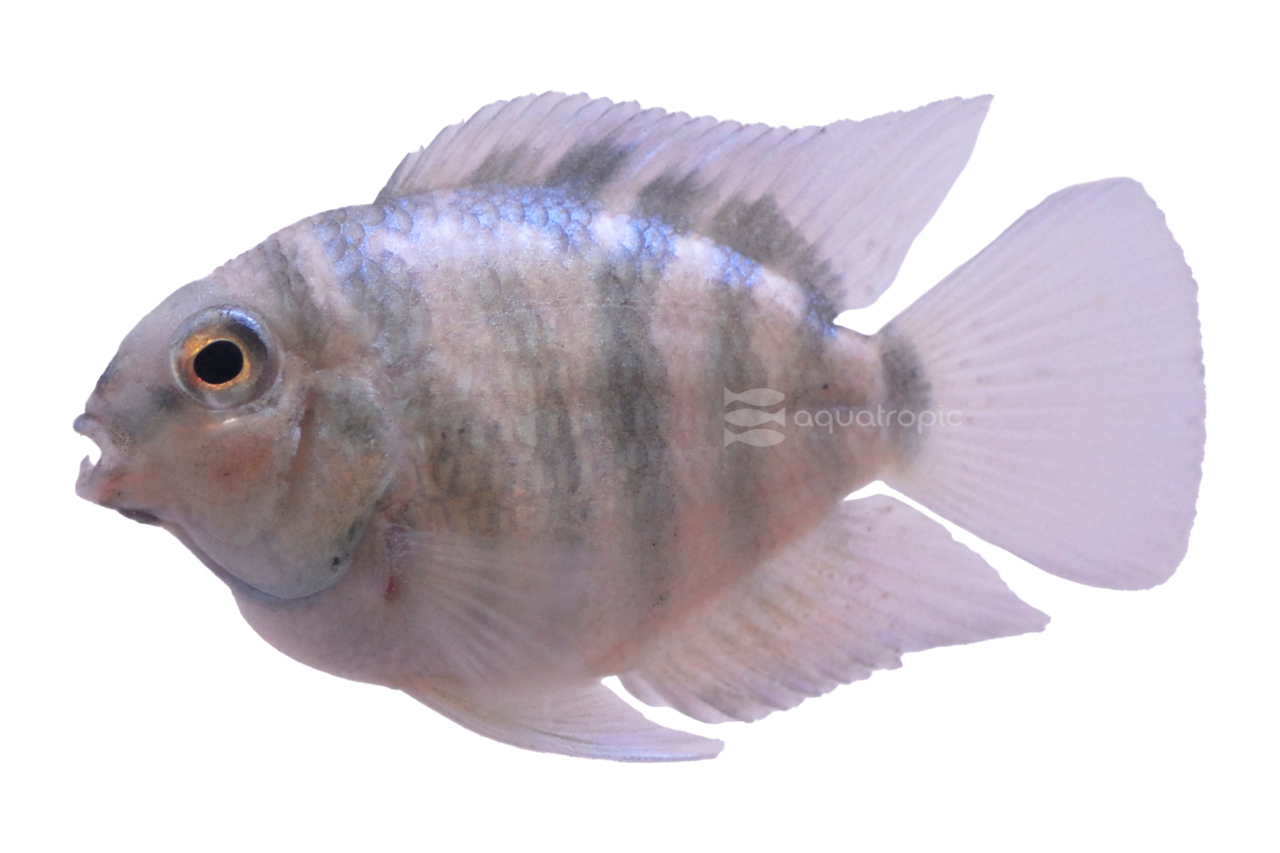 like some sand to push around, and because they'll root around in it, the sand should be soft, and any gravel should be rounded smooth to prevent the Parrots from irritating themselves.
like some sand to push around, and because they'll root around in it, the sand should be soft, and any gravel should be rounded smooth to prevent the Parrots from irritating themselves.
These fish have been aquacultured back to at least the 1990s and have lived their whole lives in captive water parameters and are generalists. They'll be fine in almost all the tap water you'll encounter in North America as long as it has been treated for chlorine and chloramines (unless of course you have some kind of local water disaster going on). As long as the display is in the 70s temp wise, and has a pH between 6 and 8, Parrot Cichlids will be just fine in it. They can get fairly large, and they like big meals, which means a lot of waste and they're somewhat messy eaters to boot. The point is filtration should be up to the task. You'd like to turn over the water volume at least five times an hour or more, but the return flow should be diffuse enough, so the fish don't struggle swimming. Keep up with the regular and large water changes.
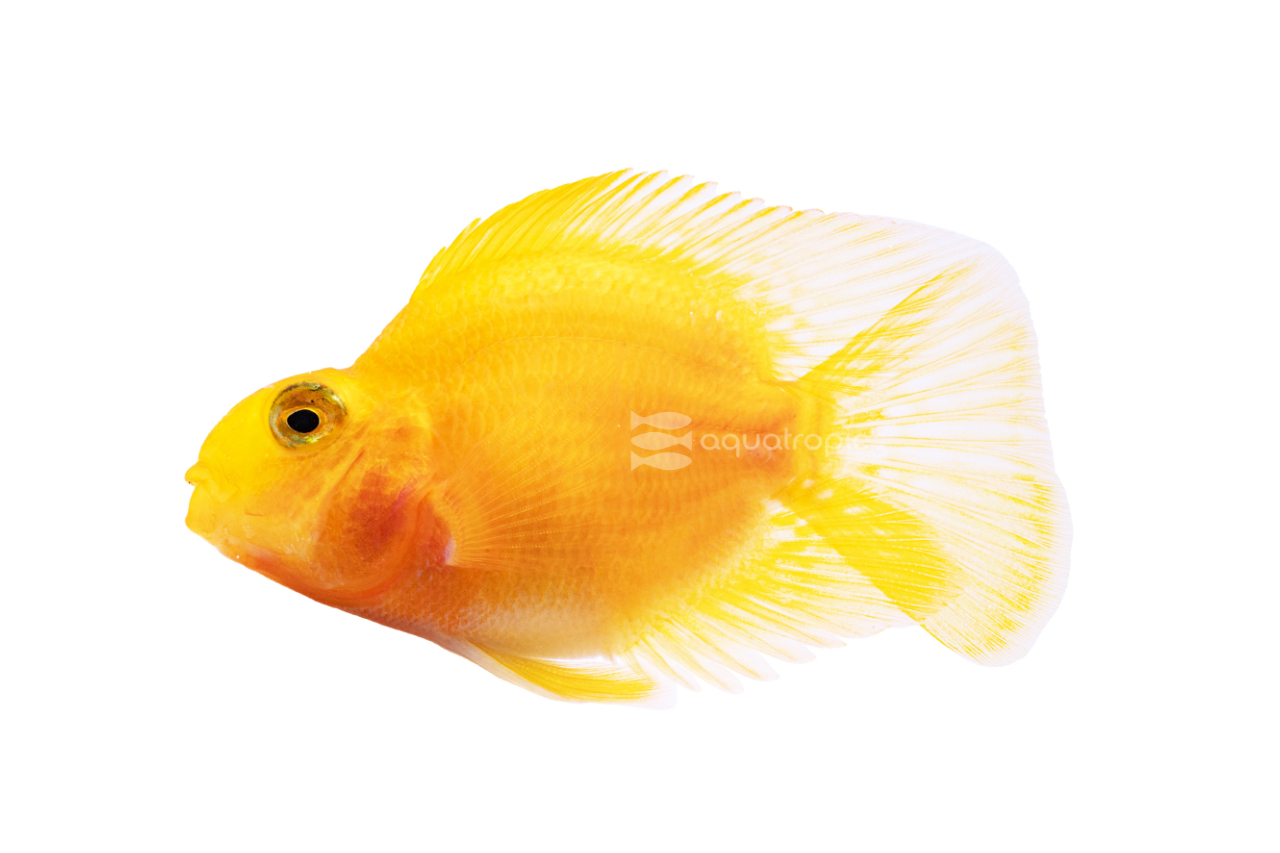 In regard to these large messy meals, you can feed Parrot Cichlids just about any and all fish foods, and they will take it down with gusto. They've been living on pelletized foods for most of their lives, and this is a perfectly acceptable diet as long as you choose a high-quality pellet. In house we trust the Nutramar Complete for them, which gives them enough protein and pigment enriching nutrients and minerals. If you want to feed them a more interesting diet, make sure what you offer has some carotene, like Gamma Krill Pacifica or Krill Superba as this will help enhance the reds, yellows and oranges that are common on many of the variations of Parrot Cichlid. They'll also relish Bloodworms, and live earthworms. Smaller specimens will do well on Gamma Mysis and Gamma Brine plus Spirulina and Brine plus Omega.
In regard to these large messy meals, you can feed Parrot Cichlids just about any and all fish foods, and they will take it down with gusto. They've been living on pelletized foods for most of their lives, and this is a perfectly acceptable diet as long as you choose a high-quality pellet. In house we trust the Nutramar Complete for them, which gives them enough protein and pigment enriching nutrients and minerals. If you want to feed them a more interesting diet, make sure what you offer has some carotene, like Gamma Krill Pacifica or Krill Superba as this will help enhance the reds, yellows and oranges that are common on many of the variations of Parrot Cichlid. They'll also relish Bloodworms, and live earthworms. Smaller specimens will do well on Gamma Mysis and Gamma Brine plus Spirulina and Brine plus Omega.
When the Parrot Cichlids are small, they are often drab but grow quickly and color up when they get a few inches long. They grow like weeds until they hit maturity at five(ish) inches long where this rate tapers off some. While they are sexually mature at this point, breeding Parrot Cichlids is like playing craps. You're never quite sure what's going to be rolled, or even more challenging, if there will be dice at all. Parrot Cichlids are often infertile. They will still build nests and defend eggs, but they will usually consume these within a day or two. If you really want to have Parrot babies, it will take a dedicated effort and a large pool of adult fish to pull from in order to create a fertile pair. They can also be devilishly tricky to sex. The males get a tad bigger and longer, but that's not much to go on.
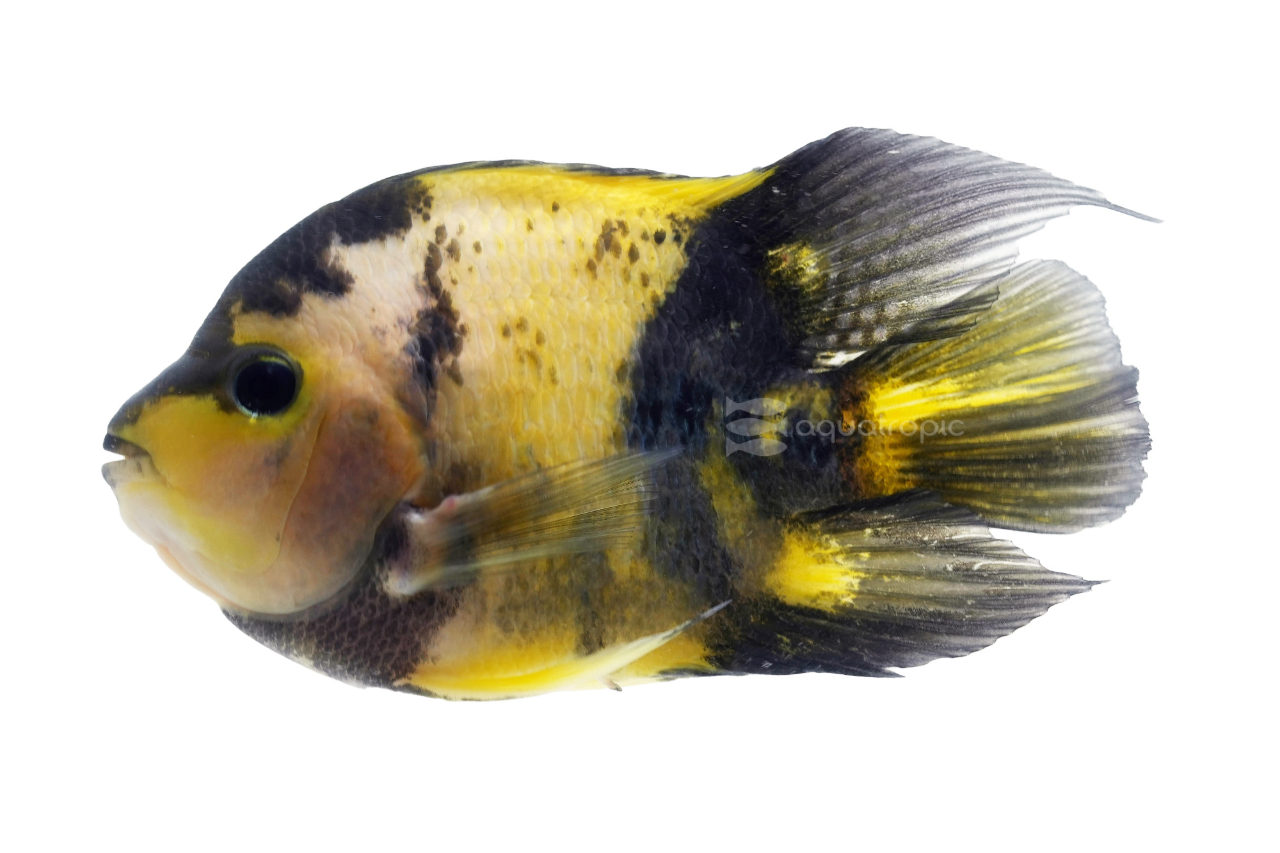 These fish are definitely cool enough to keep on their own, like fancy goldfish, but they are peaceful enough to be part of a community tank that could be filled with large Tetras, Barbs, Rasboras, Mollies, Swords, Danios, Guaramis, Angels, Catfish, other peaceful Cichilds, Plecos and many others. Really the only things we'd worry about are things that are small and slow like Fancy Guppies that could become a meal, and fish that are too aggressive. Also, your Parrot Cichlids are not to be trusted with decorative shrimp.
These fish are definitely cool enough to keep on their own, like fancy goldfish, but they are peaceful enough to be part of a community tank that could be filled with large Tetras, Barbs, Rasboras, Mollies, Swords, Danios, Guaramis, Angels, Catfish, other peaceful Cichilds, Plecos and many others. Really the only things we'd worry about are things that are small and slow like Fancy Guppies that could become a meal, and fish that are too aggressive. Also, your Parrot Cichlids are not to be trusted with decorative shrimp.
Parrot Cichlids aren't for everyone, but no fish is. If you want your display to look like a photograph of an incredibly specific wild environment, these are the wrong choice. On the other hand, if you're looking for a wet pet, a fish with amazing personality, engaging intelligence and brilliant colors, they might be for you. These fish will learn to recognize people and are very interactive. They'd be great on their own or with any of the long list of tankmates that are suitable for them. If this sounds more like your cup of tea, ask your LFS (that's your Local Fish Store) about any of the amazing Parrot Cichlids available from Aquatropic today!